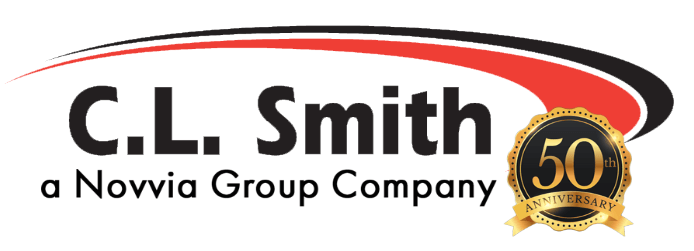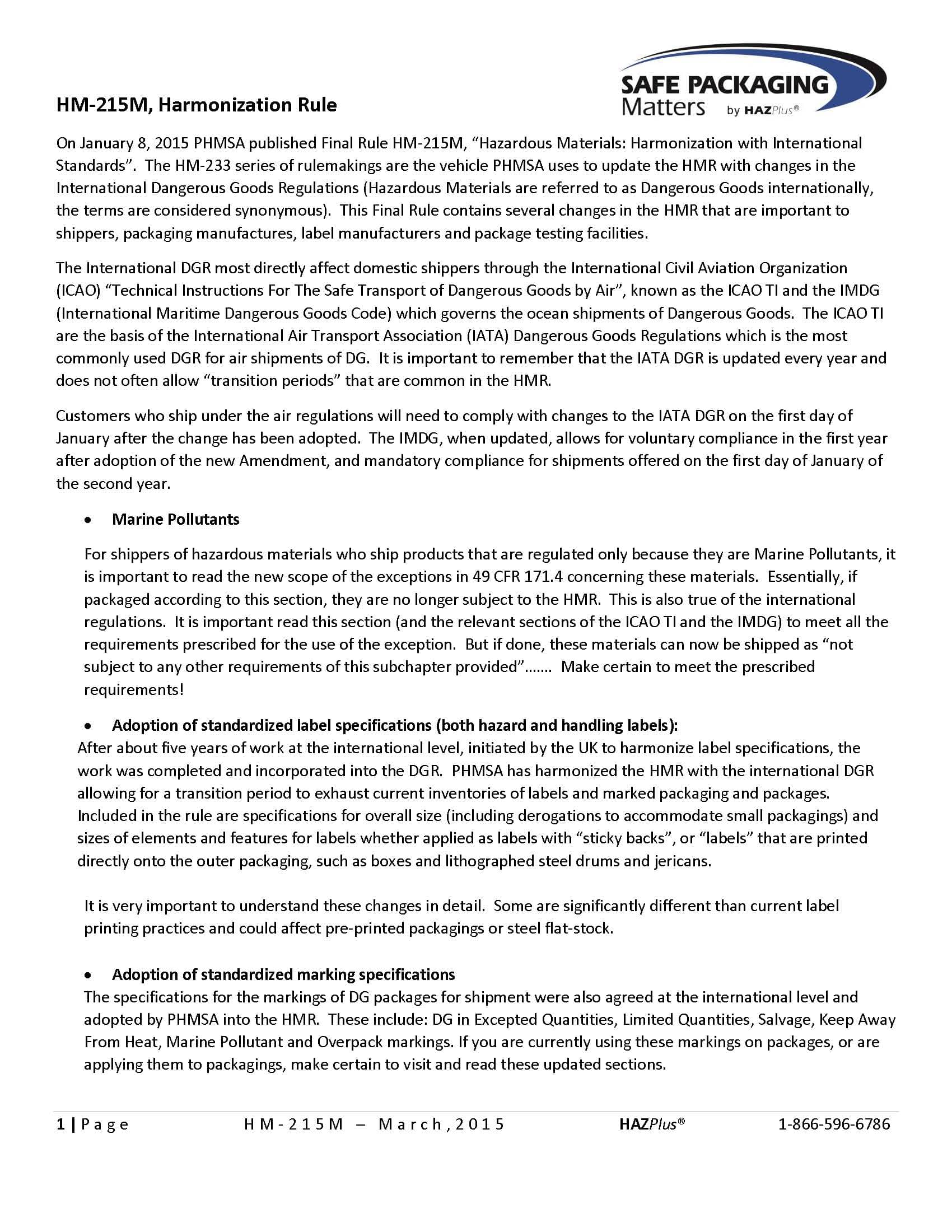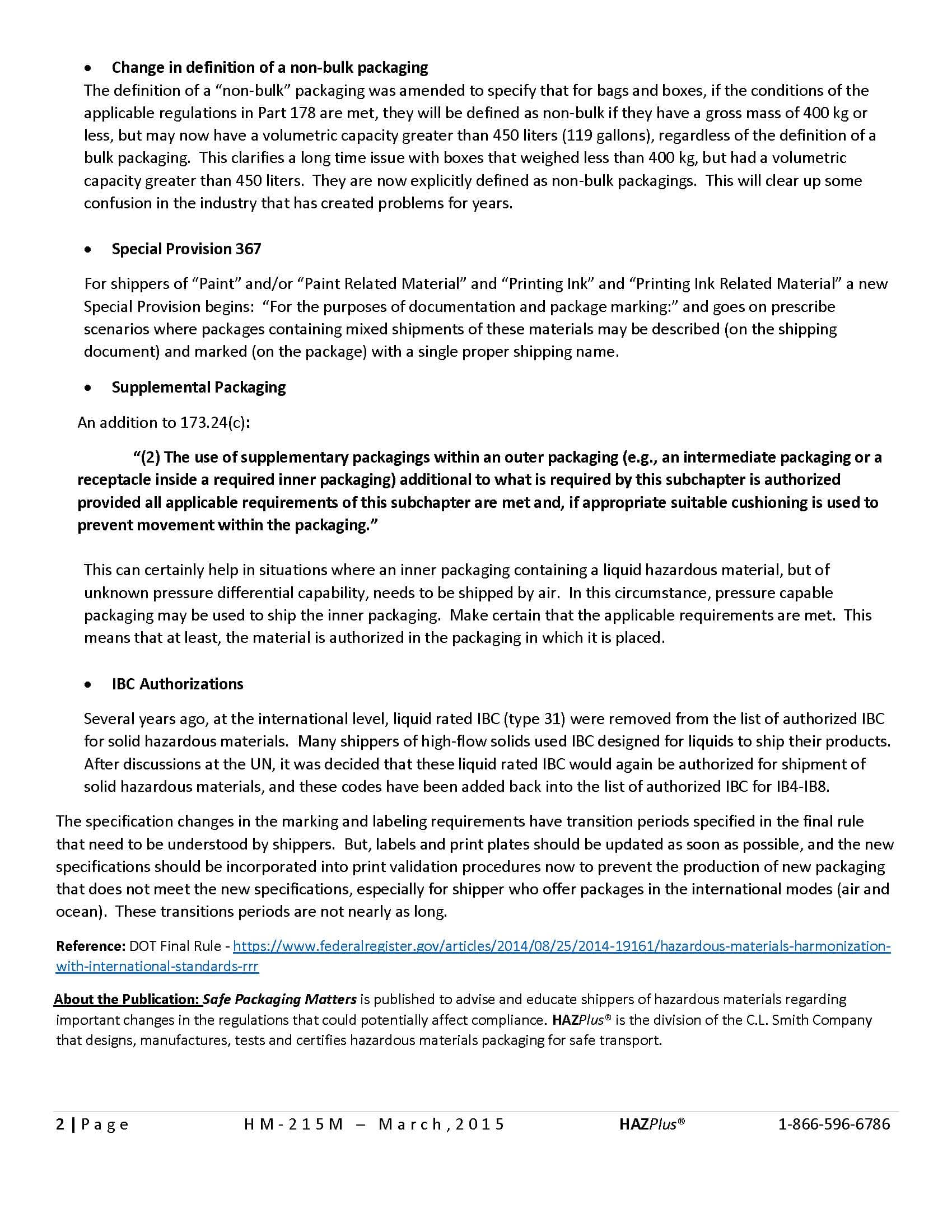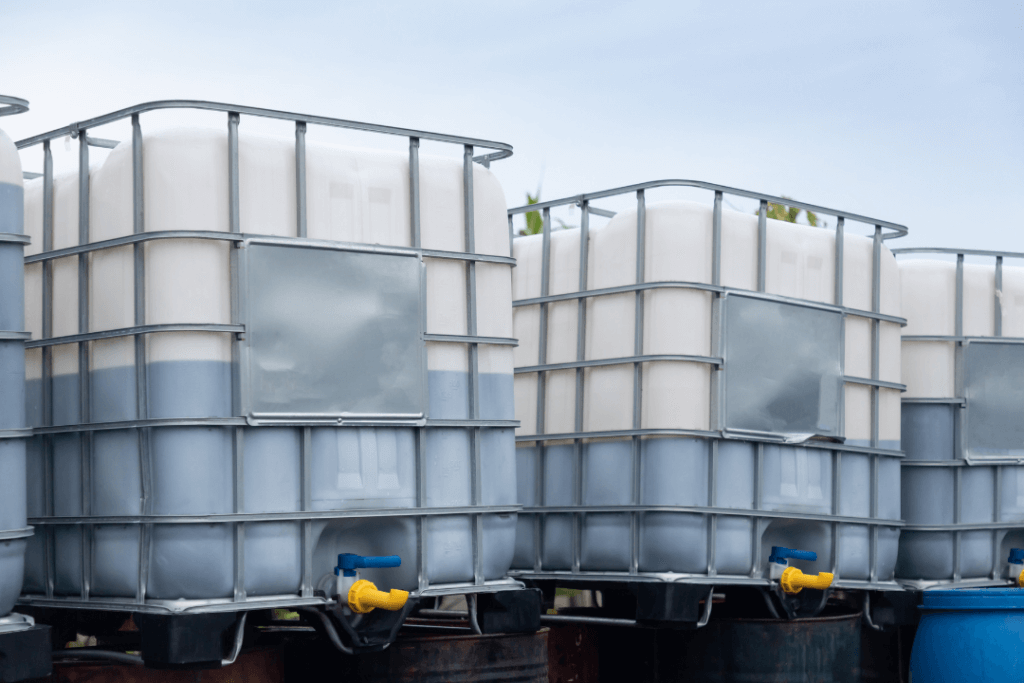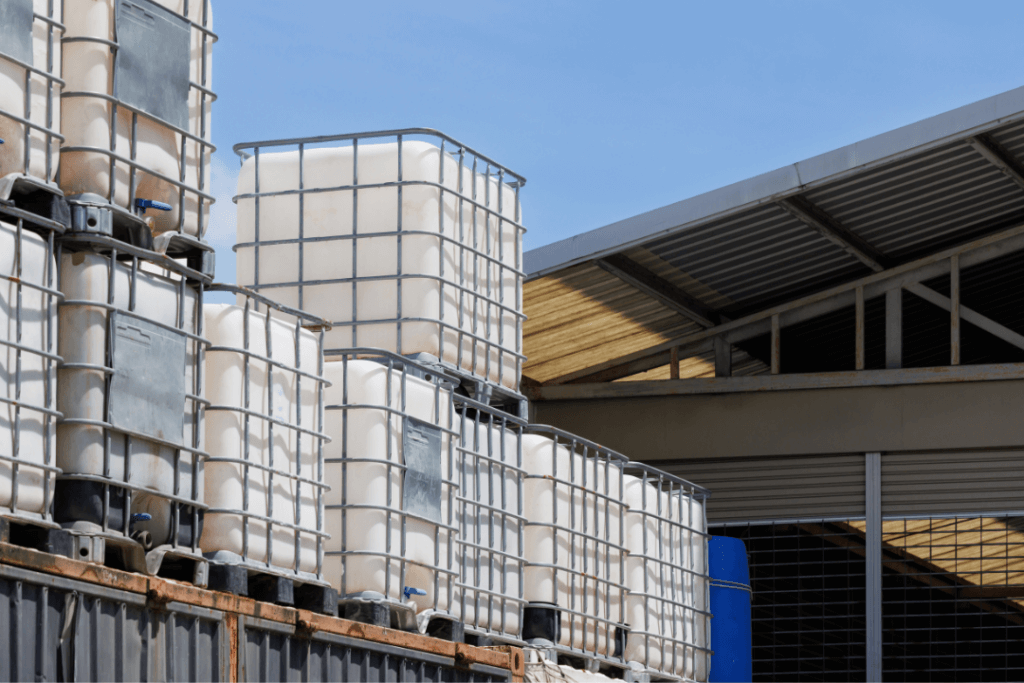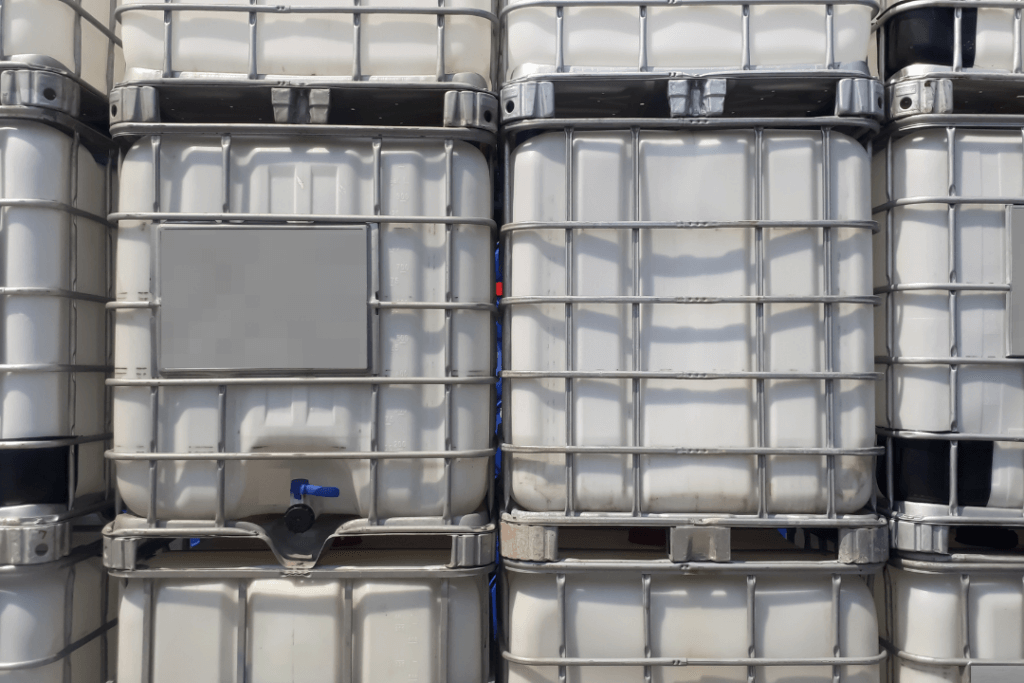HM-215M, Harmonization Rule
On January 8, 2015 PHMSA published Final Rule HM-215M, “Hazardous Materials: Harmonization with International Standards”.
The HM-233 series of rulemakings are the vehicle PHMSA uses to update the HMR with changes in the International Dangerous Goods Regulations (Hazardous Materials are referred to as Dangerous Goods internationally, the terms are considered synonymous). This Final Rule contains several changes in the HMR that are important to shippers, packaging manufactures, label manufacturers and package testing facilities.
The International DGR most directly affect domestic shippers through the International Civil Aviation Organization
(ICAO) “Technical Instructions For The Safe Transport of Dangerous Goods by Air”, known as the ICAO TI and the IMDG (International Maritime Dangerous Goods Code) which governs the ocean shipments of Dangerous Goods. The ICAO TI are the basis of the International Air Transport Association (IATA) Dangerous Goods Regulations which is the most commonly used DGR for air shipments of DG. It is important to remember that the IATA DGR is updated every year and does not often allow “transition periods” that are common in the HMR.
Customers who ship under the air regulations will need to comply with changes to the IATA DGR on the first day of January after the change has been adopted. The IMDG, when updated, allows for voluntary compliance in the first year after adoption of the new Amendment, and mandatory compliance for shipments offered on the first day of January of the second year.
- Marine Pollutants
For shippers of hazardous materials who ship products that are regulated only because they are Marine Pollutants, it is important to read the new scope of the exceptions in 49 CFR 171.4 concerning these materials. Essentially, if packaged according to this section, they are no longer subject to the HMR. This is also true of the international regulations. It is important read this section (and the relevant sections of the ICAO TI and the IMDG) to meet all the requirements prescribed for the use of the exception. But if done, these materials can now be shipped as “not subject to any other requirements of this subchapter provided”……. Make certain to meet the prescribed requirements!
- Adoption of standardized label specifications (both hazard and handling labels):
After about five years of work at the international level, initiated by the UK to harmonize label specifications, the work was completed and incorporated into the DGR. PHMSA has harmonized the HMR with the international DGR allowing for a transition period to exhaust current inventories of labels and marked packaging and packages. Included in the rule are specifications for overall size (including derogations to accommodate small packagings) and sizes of elements and features for labels whether applied as labels with “sticky backs”, or “labels” that are printed directly onto the outer packaging, such as boxes and lithographed steel drums and jericans.
It is very important to understand these changes in detail. Some are significantly different than current label printing practices and could affect pre-printed packagings or steel flat-stock.
- Adoption of standardized marking specifications
The specifications for the markings of DG packages for shipment were also agreed at the international level and adopted by PHMSA into the HMR. These include: DG in Excepted Quantities, Limited Quantities, Salvage, Keep Away From Heat, Marine Pollutant and Overpack markings. If you are currently using these markings on packages, or are applying them to packagings, make certain to visit and read these updated sections.
- Definition of “non-bulk” packaging
The definition of a “non-bulk” packaging was amended to specify that for bags and boxes, if the conditions of the applicable regulations in Part 178 are met, they will be defined as non-bulk if they have a gross mass of 400 kg or less, but may now have a volumetric capacity greater than 450 liters (119 gallons), regardless of the definition of a bulk packaging. This clarifies a long time issue with boxes that weighed less than 400 kg, but had a volumetric capacity greater than 450 liters. They are now explicitly defined as non-bulk packagings. This will clear up some confusion in the industry that has created problems for years.
- Special Provision 367
For shippers of “Paint” and/or “Paint Related Material” and “Printing Ink” and “Printing Ink Related Material” a new Special Provision begins: “For the purposes of documentation and package marking:” and goes on prescribe scenarios where packages containing mixed shipments of these materials may be described (on the shipping document) and marked (on the package) with a single proper shipping name.
- Supplemental Packaging An addition to 173.24(c):
“(2) The use of supplementary packagings within an outer packaging (e.g., an intermediate packaging or a receptacle inside a required inner packaging) additional to what is required by this subchapter is authorized provided all applicable requirements of this subchapter are met and, if appropriate suitable cushioning is used to prevent movement within the packaging.”
This can certainly help in situations where an inner packaging containing a liquid hazardous material, but of unknown pressure differential capability, needs to be shipped by air. In this circumstance, pressure capable packaging may be used to ship the inner packaging. Make certain that the applicable requirements are met. This means that at least, the material is authorized in the packaging in which it is placed.
- IBC Authorizations
Several years ago, at the international level, liquid rated IBC (type 31) were removed from the list of authorized IBC for solid hazardous materials. Many shippers of high-flow solids used IBC designed for liquids to ship their products. After discussions at the UN, it was decided that these liquid rated IBC would again be authorized for shipment of solid hazardous materials, and these codes have been added back into the list of authorized IBC for IB4-IB8.
The specification changes in the marking and labeling requirements have transition periods specified in the final rule that need to be understood by shippers. But, labels and print plates should be updated as soon as possible, and the new specifications should be incorporated into print validation procedures now to prevent the production of new packaging that does not meet the new specifications, especially for shipper who offer packages in the international modes (air and ocean). These transitions periods are not nearly as long.
Reference: DOT Final Rule – https://www.federalregister.gov/articles/2014/08/25/2014–19161/hazardous–materials–harmonizationwith–international–standards–rrr
About the Publication: Safe Packaging Matters is published to advise and educate shippers of hazardous materials regarding important changes in the regulations that could potentially affect compliance. HAZPlus® is the division of the C.L. Smith Company that designs, manufactures, tests and certifies hazardous materials packaging for safe transport.
Comments are closed
